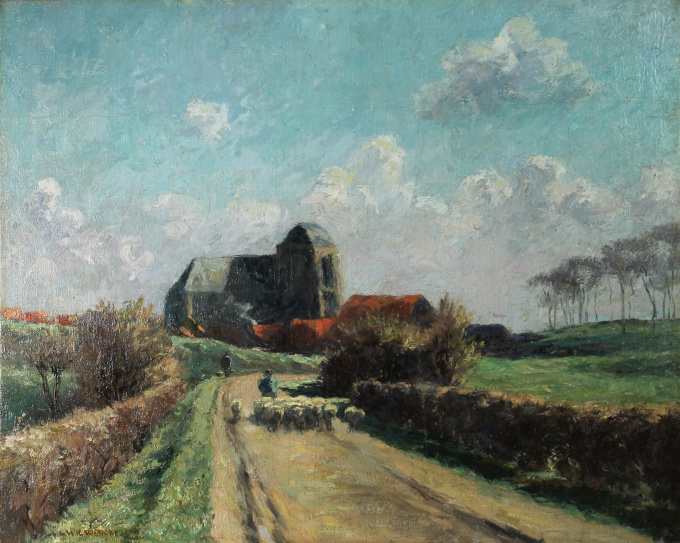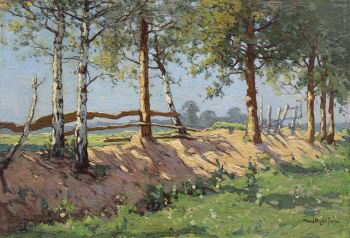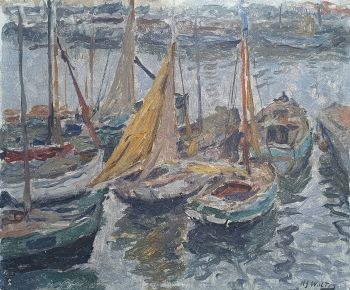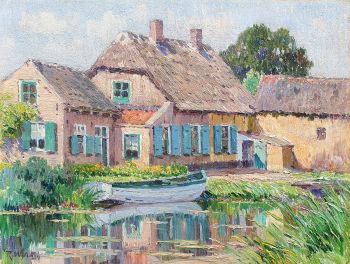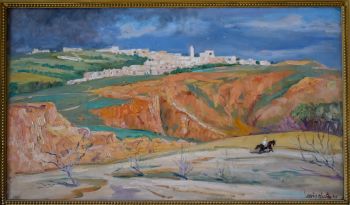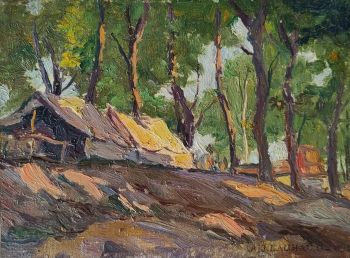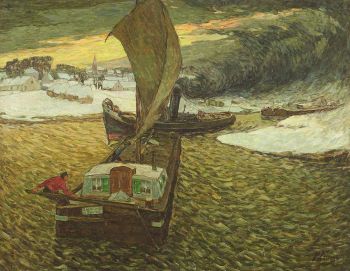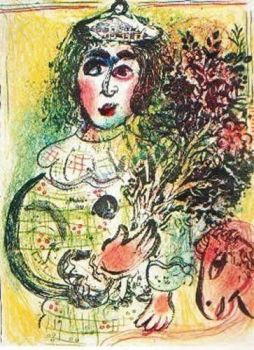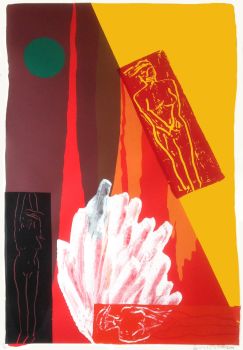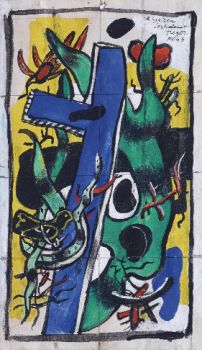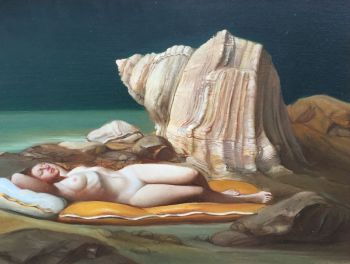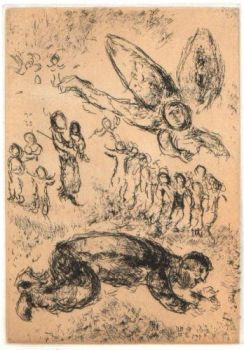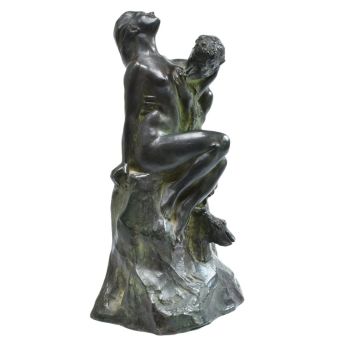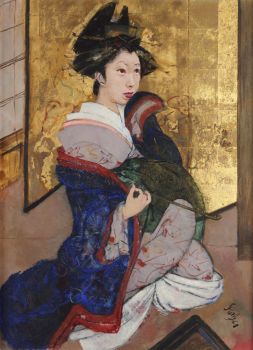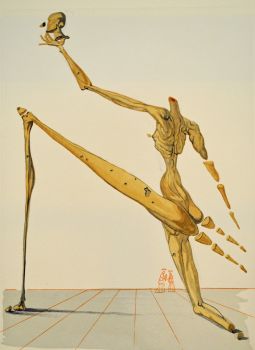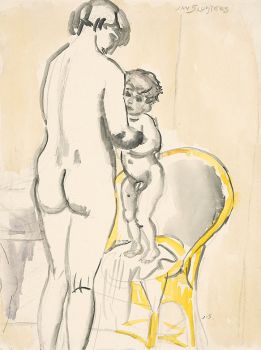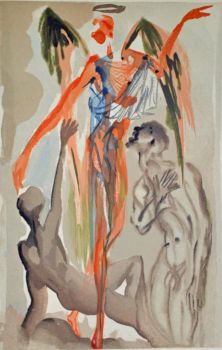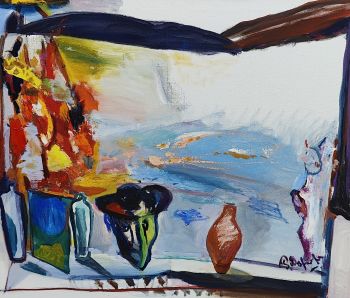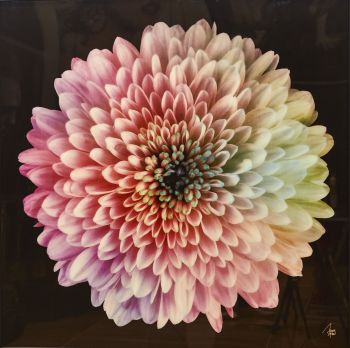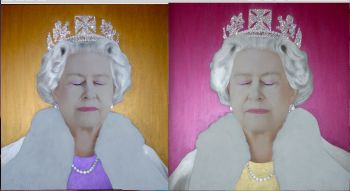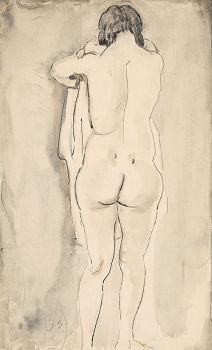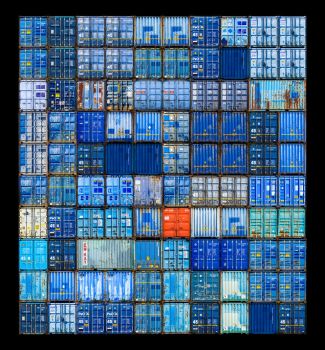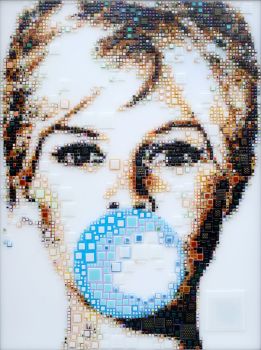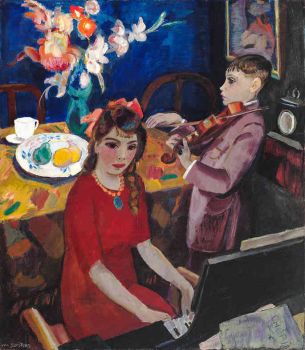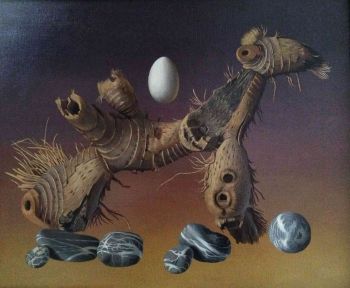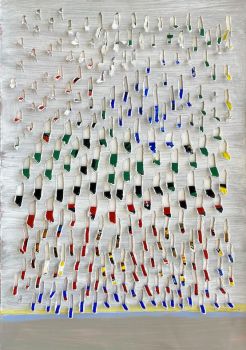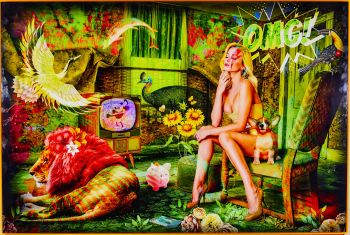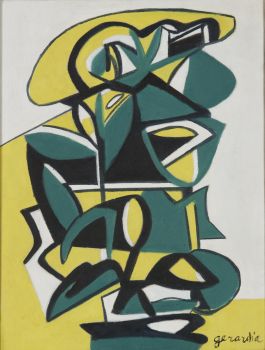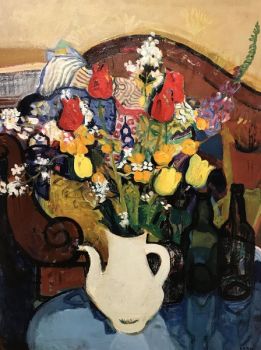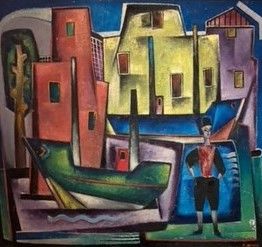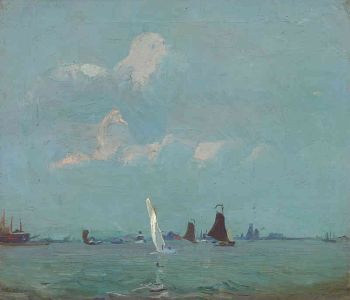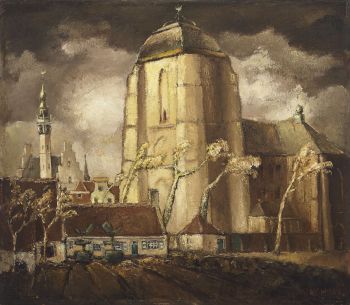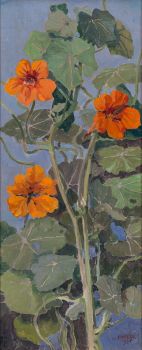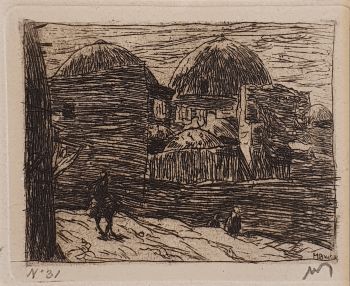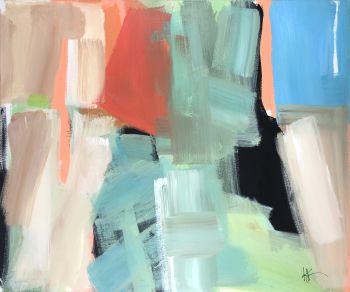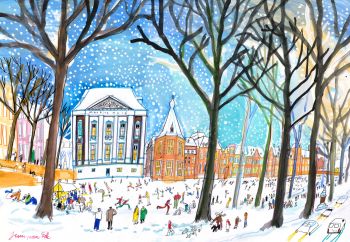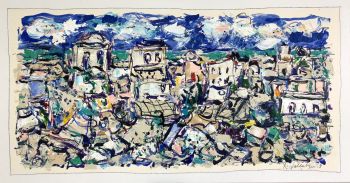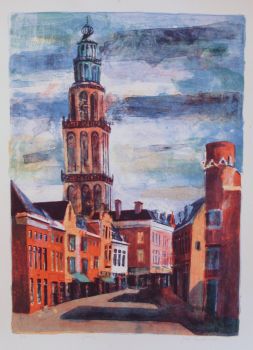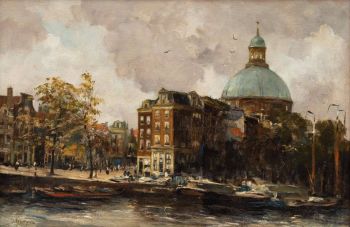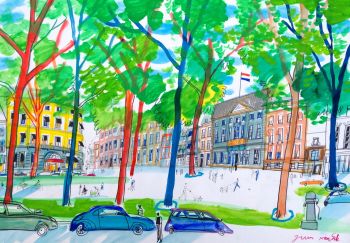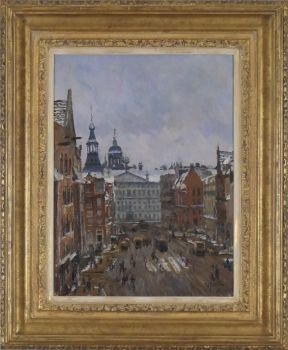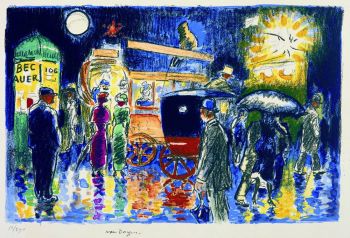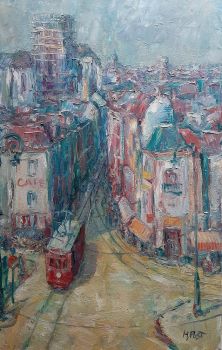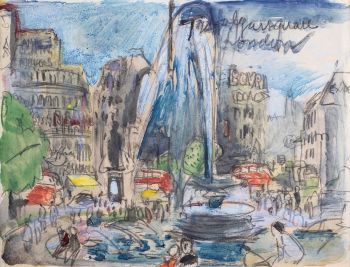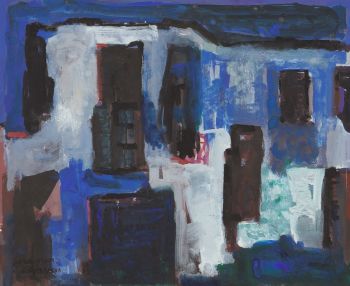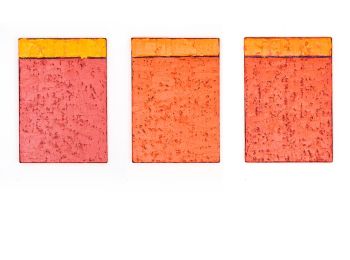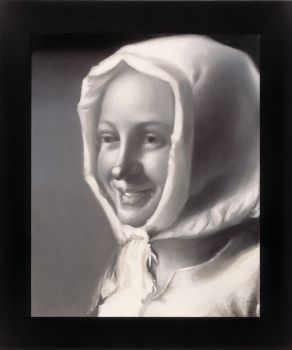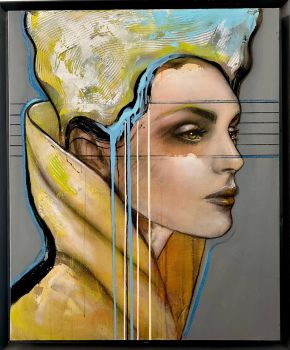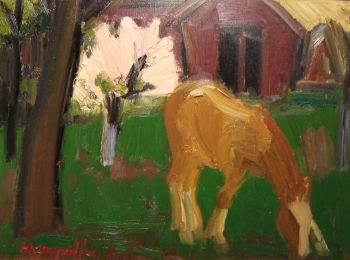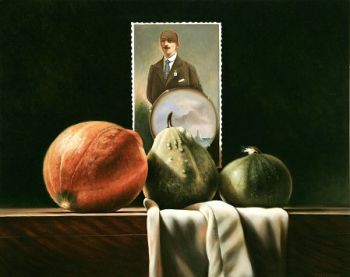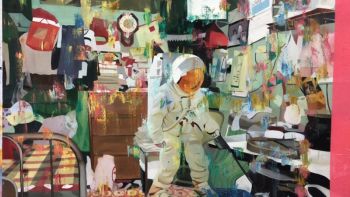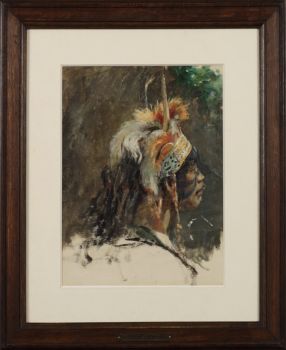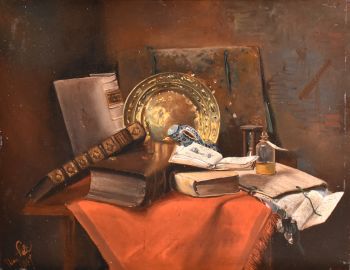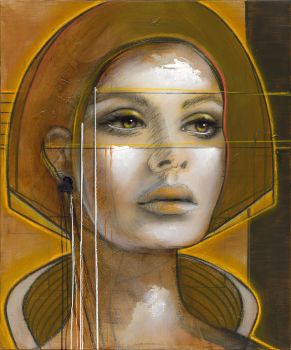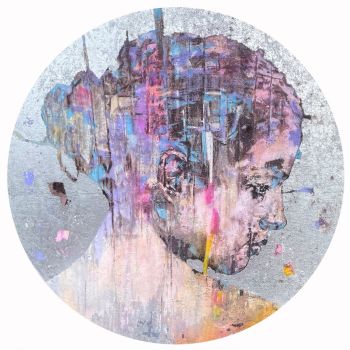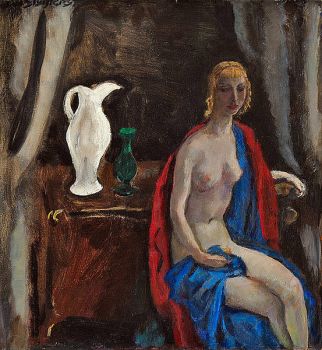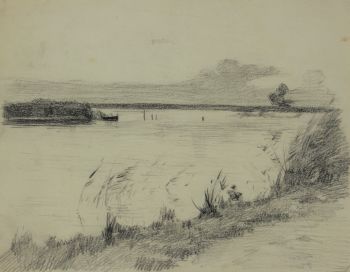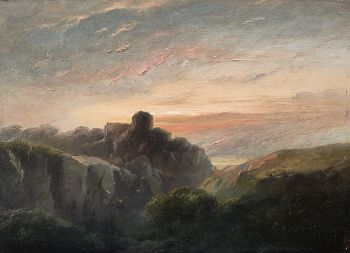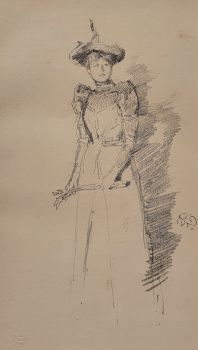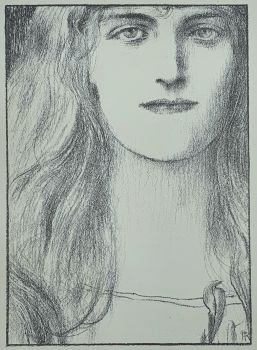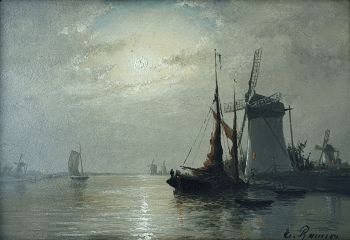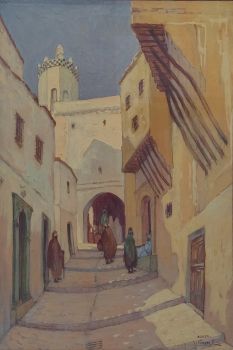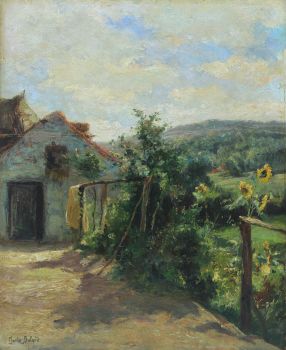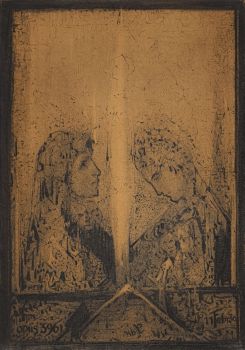View on the Church of Our Lady in Veere – Gezicht op de Grote Kerk in Veere 1910 - 1920
Willem Wenckebach
TelaPittura a olioDipingere
65 ⨯ 81 cm
ConditionExcellent
€ 3.800
Klooster Fine Art
- A proposito di opere d'arte[EN]
Willem Wenckebach probably painted this view on the Church of Our Lady around 1917, around the time he specialized in painting, after his initial success as an illustrator. The work shows the small town of Veere in the Dutch province Zeeland, seen from the North-West. On the foreground, a shepherd walks his flock out of town. In the background the Church of Our Lady – or Grote Kerk – dominates the landscape.
Wenckebach painted the view in a luminist style, emphasizing the effect of the light of the morning sun lighting the church. The technique he used is akin to the impressionists, which shows most clearly in his loose and varied brushwork. Especially in the sky but also throughout the painting he displays his mastery of colour.
Veere is situated on the coast and historically was a successful trade town on the former island of Walcheren. In the early twentieth century the region became a popular destination for artists to visit, particularly the city of Domburg. The seaside resort attracted artists like James McNeill Whistler, Piet Mondriaan and Jan Toorop.
[NL]
Willem Wenckebach schilderde dit gezicht op de Onze-Lieve-Vrouwekerk in Veere vermoedelijk rond 1917. Dat is rond de tijd dat hij zich specialiseerde in schilderen, na zijn aanvankelijke succes als illustrator. Het schilderij toont het kleine, Zeeuwse plaatsje Veere, vanaf het Noordwesten gezien. Op de voorgrond loopt een herder met zijn kudde het dorp uit. De achtergrond word gedomineerd door de aanblik op de Onze-Lieve-Vrouwe- of Grote Kerk.
Wenckebach schilderde het werk in lijn met de luministen, waarbij hij het effect van het ochtendlicht op de kerk benadrukte. De schildertechniek die hij gebruikte is verwant aan het werk van de impressionisten, wat vooral terugkomt in zijn vrije en gevarieerde penseelvoering. Voornamelijk de lucht, maar ook verspreid door het schilderij laat hij veel gevoel voor kleur zien.
Veere is gesitueerd aan de kust, en was een historisch belangrijke handelsstad op het toenmalige eiland Walcheren. In de vroege twintigste eeuw werd de regio een gewilde bestemming voor kunstenaars – met name het nabij gelegen Domburg. Die kustplaats trok grote kunstenaars als James McNeill Whistler, Piet Mondriaan en Jan Toorop aan. - A proposito di opere artista
Ludwig Willem Reymert Wenckebach, meglio conosciuto come Willem Wenckebach, è stato un versatile artista olandese. Ha lavorato come pittore, illustratore, disegnatore di rilegature e artista grafico, ed era meglio conosciuto per i suoi acquerelli per gli album Verkade di Jac. P. Thijsse, oltre alle collaborazioni con Jan Voerman Jr. e Jan van Oort.
Nel 1878 Wenckebach fece apprendistato presso D.P. van Lokhorst e Jacob Eduard van Heemskerck van Beest a Utrecht, dopo di che studiò a Parigi tra il 1880 e il 1884 grazie ad una borsa di studio reale. Tornato nei Paesi Bassi, divenne membro del Genootschap Kunstliefde e strinse un'amicizia con Anthon van Rappart, con il quale dipinse spesso "en plein air".
Wenckebach, noto per i suoi dipinti di paesaggi, era anche amico di personaggi come Hendrik Petrus Berlage e Antoon Derkinderen. Espone regolarmente ad Arti et Amicitiae e dal 1910 tiene mostre personali presso mercanti d'arte. Il suo lavoro, principalmente nello stile della Scuola dell'Aia, si concentrava sui paesaggi in aree come Wolfheze, Drenthe e le dune olandesi.
Dopo il 1917 Wenckebach si concentrò interamente sulla pittura e smise di illustrare. Insegnò anche alla Scuola di Arti Applicate di Haarlem, con studenti come suo cugino Oswald Wenckebach e altri come Rie de Balbian Verster-Bolderhey e Johan Briedé.
Sei interessato ad acquistare questa opera d'arte?
Artwork details
Related artworks
Otto van Rees
Het atelier van de kunstenaar in Parijs (1918)1918
Prezzo su richiestaKunsthandel Pygmalion
Roland Strasser
Geisha giapponese20th century
Prezzo su richiestaZebregs & Röell - Fine Art - Antiques
Jan Sluijters
Greet met Jantje, Moeder met kind, naakt op een stoel staand1900 - 1940
Prezzo su richiestaStudio 2000 Art Gallery
1 - 4 / 24- 1 - 4 / 24
Jean-François Rauzier
Veduta Amsterdam 2 - Limited edition of 82015
Prezzo su richiestaVilla del Arte Galleries
Jean-François Rauzier
Veduta Amsterdam 1 - Limited edition of 8 2015
Prezzo su richiestaVilla del Arte Galleries
Jean-François Rauzier
Istanbul Veduta - Limited edition of 8 2015 - 2024
Prezzo su richiestaVilla del Arte Galleries
Herbert Fiedler
Stadsgezicht bij avond/ Café du tabac, Parijs1931
Prezzo su richiestaStudio 2000 Art Gallery
Jean-François Rauzier
Amsterdam Centraal - Limited edition of 8 2015
Prezzo su richiestaVilla del Arte Galleries
1 - 4 / 24- 1 - 4 / 24
- 1 - 4 / 12

